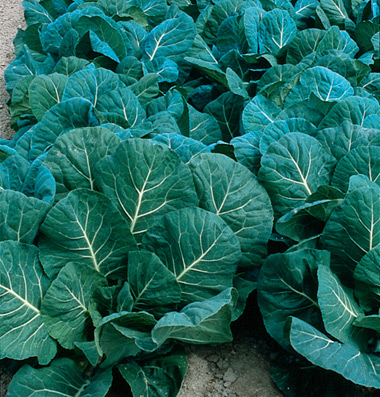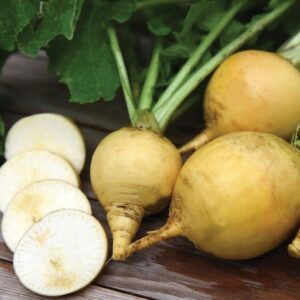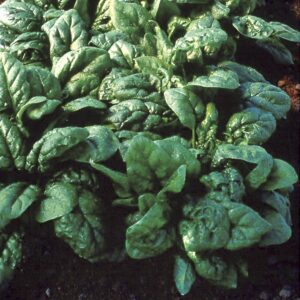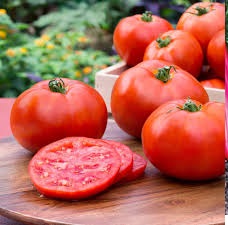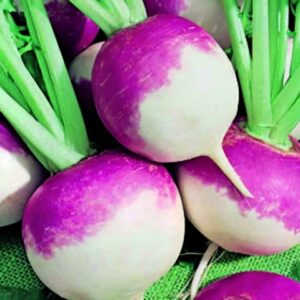Champion variety of collards
Description of champion variety of collards
The Champion variety of collards is known for its large, broad, and slightly crinkled dark green leaves. This variety is exceptionally cold-hardy, making it a favorite choice for growers in regions with cooler climates. Champion collards have a mild, sweet flavor and tender texture, making them versatile for both fresh eating and cooking. They are often used in traditional Southern dishes like collard greens, where the leaves are slow-cooked with seasonings like bacon or ham hock for a rich and savory taste. Champion collards are also valued for their high nutritional content, providing vitamins, minerals, and antioxidants. Overall, they are a reliable and popular choice for home gardeners and commercial growers alike.
Planting instructions for champion variety of collards
To plant Champion variety of collards, follow these steps:
- Select the Right Loca Choose a spot in your garden that receives full sun to partial shade. Collards thrive in well-draining soil with a pH between 6.0 and 7.5.
- Prepare the Soil: Before planting, work the soil to a depth of at least 6 to 8 inches. Incorporate compost or aged manure to improve soil fertility and texture. Remove any weeds or debris from the planting area.
- Planting Seeds or Transplants: You can start Champion collards from seeds or transplants. If planting seeds, sow them directly into the garden soil, about ¼ to ½ inch deep. Space the seeds 12 to 18 inches apart in rows that are 18 to 24 inches apart. Alternatively, you can start seeds indoors 4 to 6 weeks before the last frost date and transplant seedlings outdoors once they have a few sets of true leaves.
- Watering: Keep the soil consistently moist, especially during dry periods. Water deeply to encourage strong root growth. Avoid overhead watering to prevent the spread of diseases.
- Fertilizing: Collards are moderate feeders. Apply a balanced fertilizer (such as 10-10-10) or compost when the plants are about 6 inches tall, and again when they start to form heads.
- Thinning: Once the seedlings emerge, thin them to the strongest plants, leaving the desired spacing between them.
- Mulching: Apply a layer of organic mulch, such as straw or shredded leaves, around the plants to conserve moisture, suppress weeds, and maintain soil temperature.
- Pest and Disease Management: Monitor for pests like cabbage loopers, aphids, and cabbage worms. Handpick pests or use organic insecticidal soap if necessary. Practice crop rotation to reduce the risk of diseases.
- Harvesting: You can start harvesting outer leaves when they are large enough to eat, usually around 60 to 80 days after planting. Cut leaves from the bottom of the plant, leaving the center intact to continue producing new growth.
Description of champion variety of collards
The Champion variety of collards is known for its large, broad, and slightly crinkled dark green leaves. This variety is exceptionally cold-hardy, making it a favorite choice for growers in regions with cooler climates. Champion collards have a mild, sweet flavor and tender texture, making them versatile for both fresh eating and cooking. They are often used in traditional Southern dishes like collard greens, where the leaves are slow-cooked with seasonings like bacon or ham hock for a rich and savory taste. Champion collards are also valued for their high nutritional content, providing vitamins, minerals, and antioxidants. Overall, they are a reliable and popular choice for home gardeners and commercial growers alike.
Planting instructions for champion variety of collards
To plant Champion variety of collards, follow these steps:
- Select the Right Loca Choose a spot in your garden that receives full sun to partial shade. Collards thrive in well-draining soil with a pH between 6.0 and 7.5.
- Prepare the Soil: Before planting, work the soil to a depth of at least 6 to 8 inches. Incorporate compost or aged manure to improve soil fertility and texture. Remove any weeds or debris from the planting area.
- Planting Seeds or Transplants: You can start Champion collards from seeds or transplants. If planting seeds, sow them directly into the garden soil, about ¼ to ½ inch deep. Space the seeds 12 to 18 inches apart in rows that are 18 to 24 inches apart. Alternatively, you can start seeds indoors 4 to 6 weeks before the last frost date and transplant seedlings outdoors once they have a few sets of true leaves.
- Watering: Keep the soil consistently moist, especially during dry periods. Water deeply to encourage strong root growth. Avoid overhead watering to prevent the spread of diseases.
- Fertilizing: Collards are moderate feeders. Apply a balanced fertilizer (such as 10-10-10) or compost when the plants are about 6 inches tall, and again when they start to form heads.
- Thinning: Once the seedlings emerge, thin them to the strongest plants, leaving the desired spacing between them.
- Mulching: Apply a layer of organic mulch, such as straw or shredded leaves, around the plants to conserve moisture, suppress weeds, and maintain soil temperature.
- Pest and Disease Management: Monitor for pests like cabbage loopers, aphids, and cabbage worms. Handpick pests or use organic insecticidal soap if necessary. Practice crop rotation to reduce the risk of diseases.
- Harvesting: You can start harvesting outer leaves when they are large enough to eat, usually around 60 to 80 days after planting. Cut leaves from the bottom of the plant, leaving the center intact to continue producing new growth.

